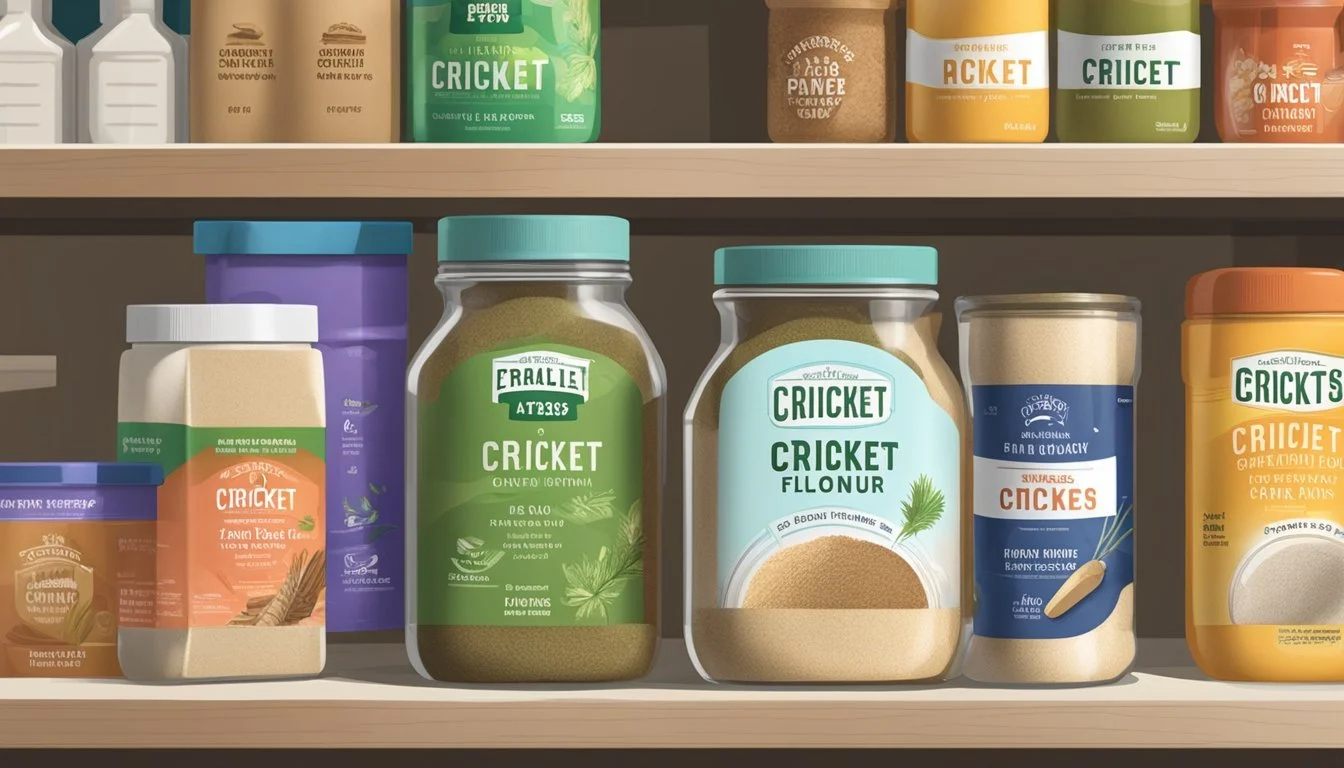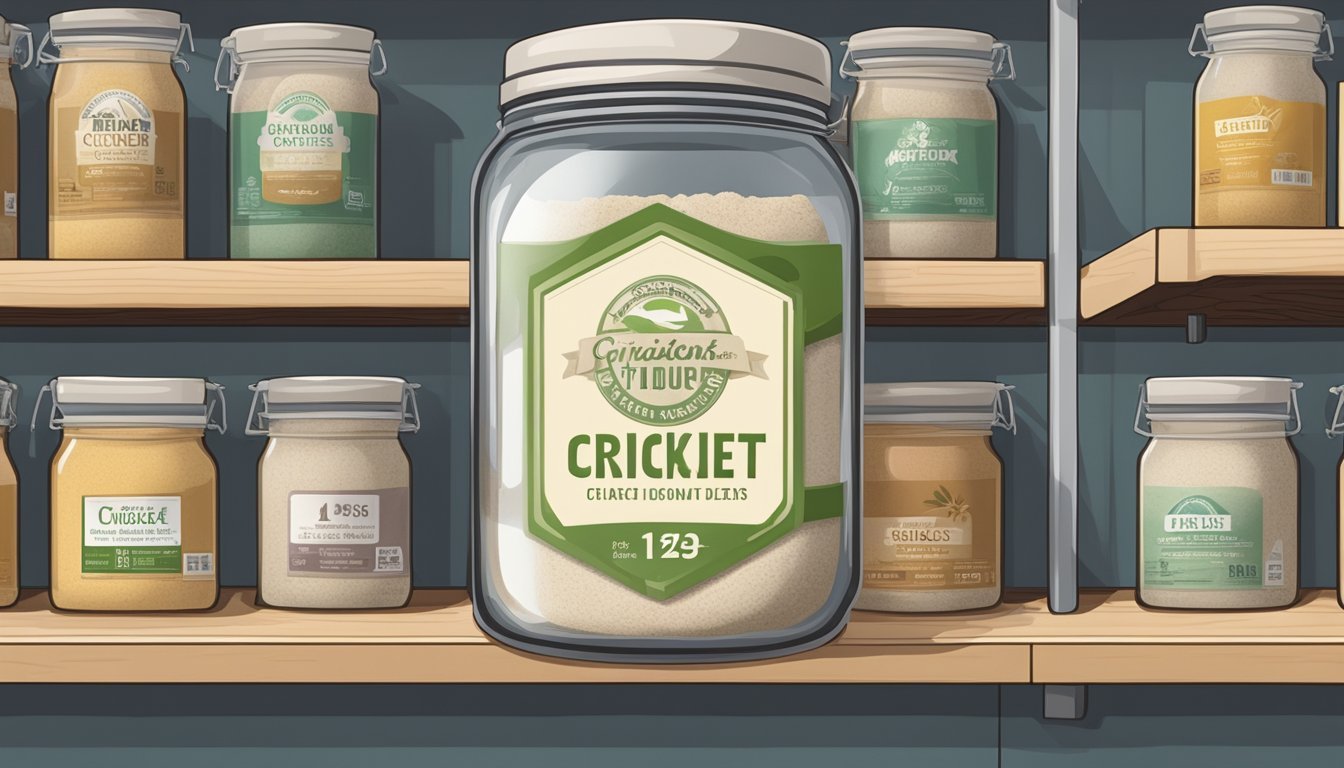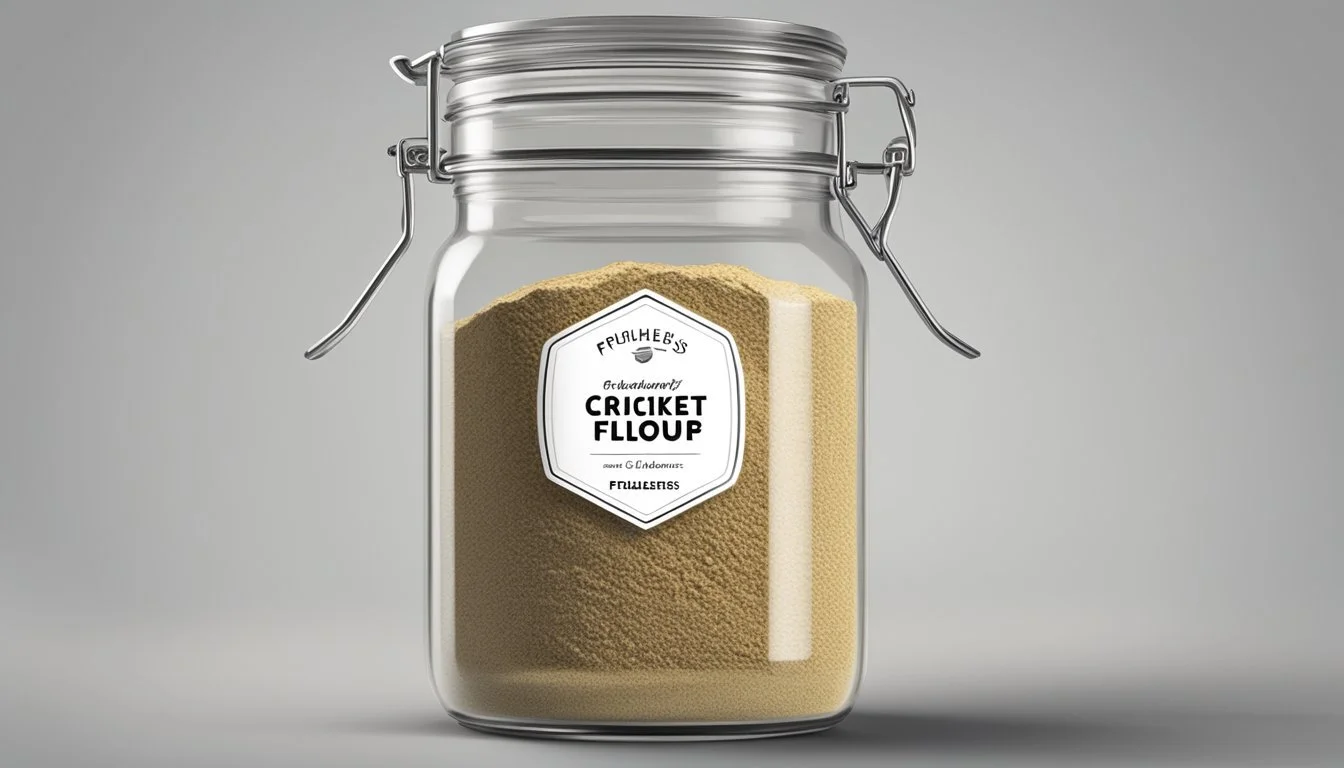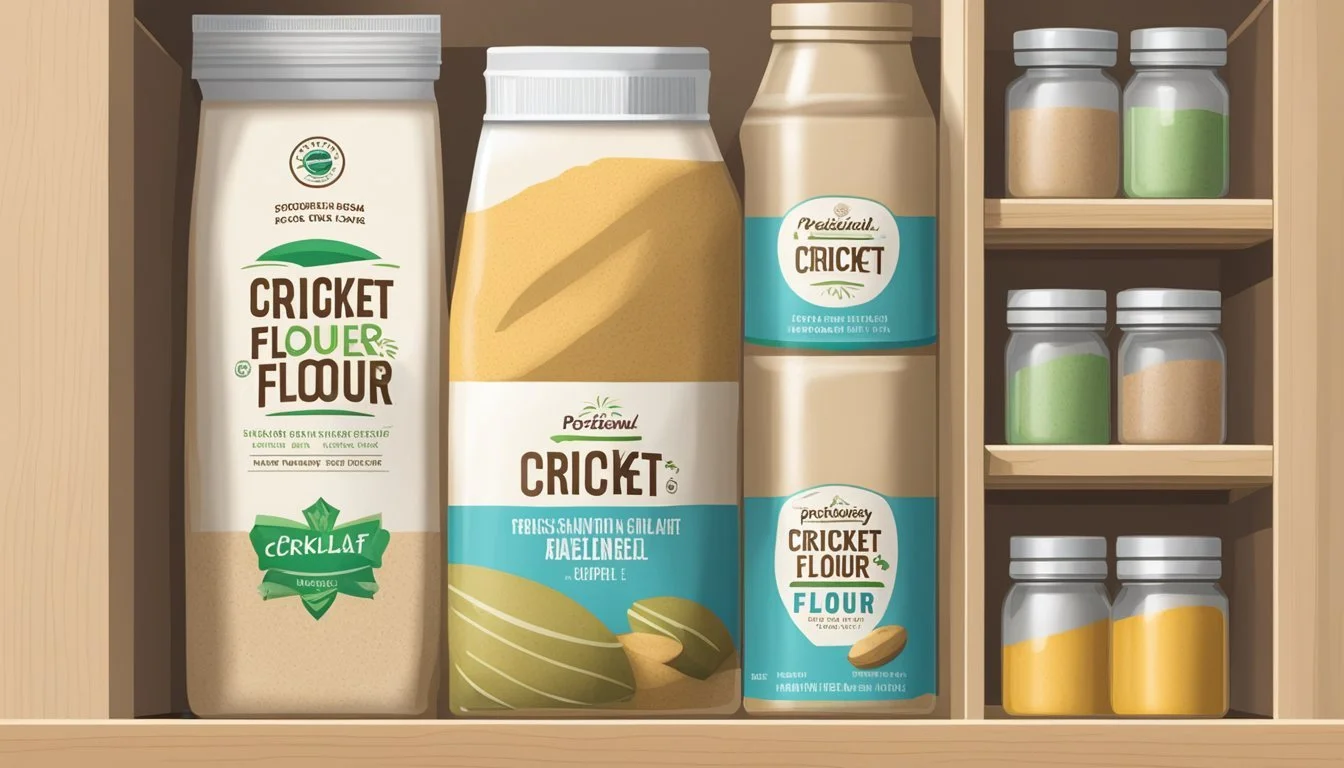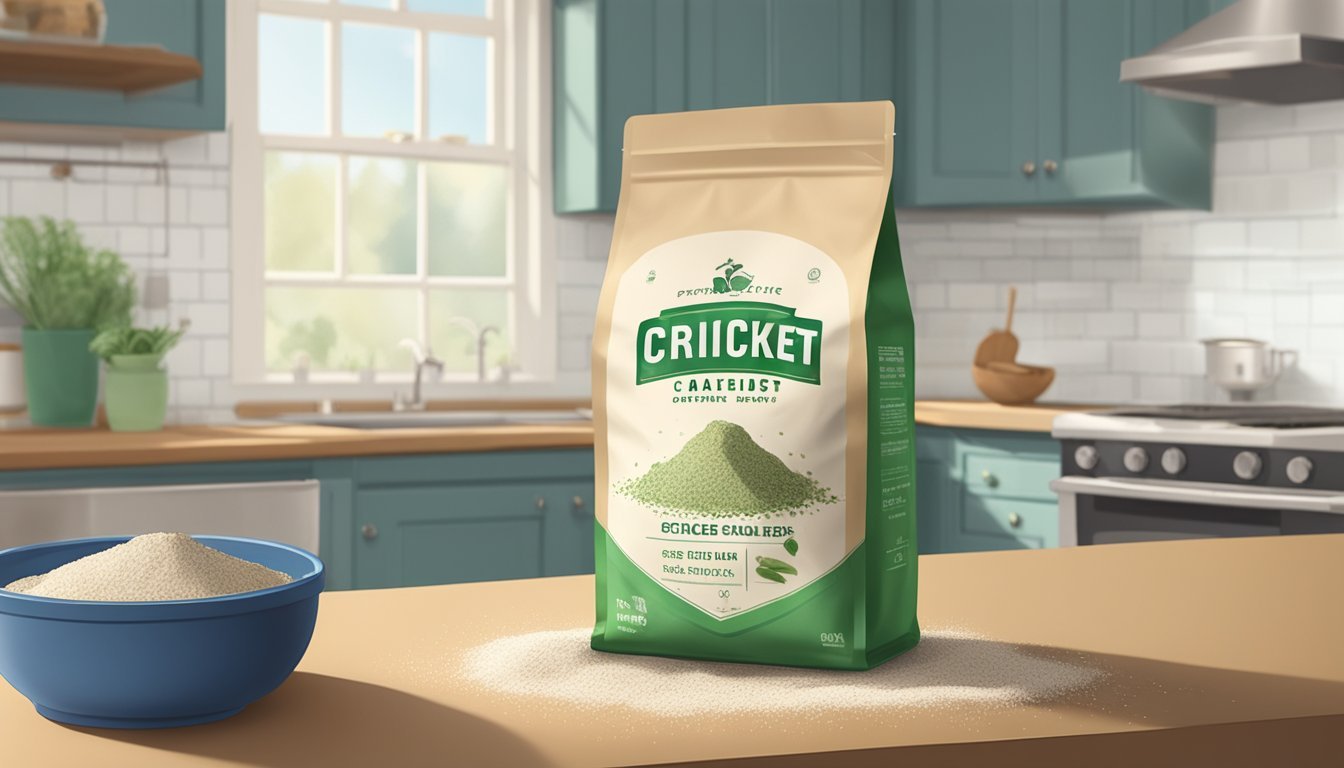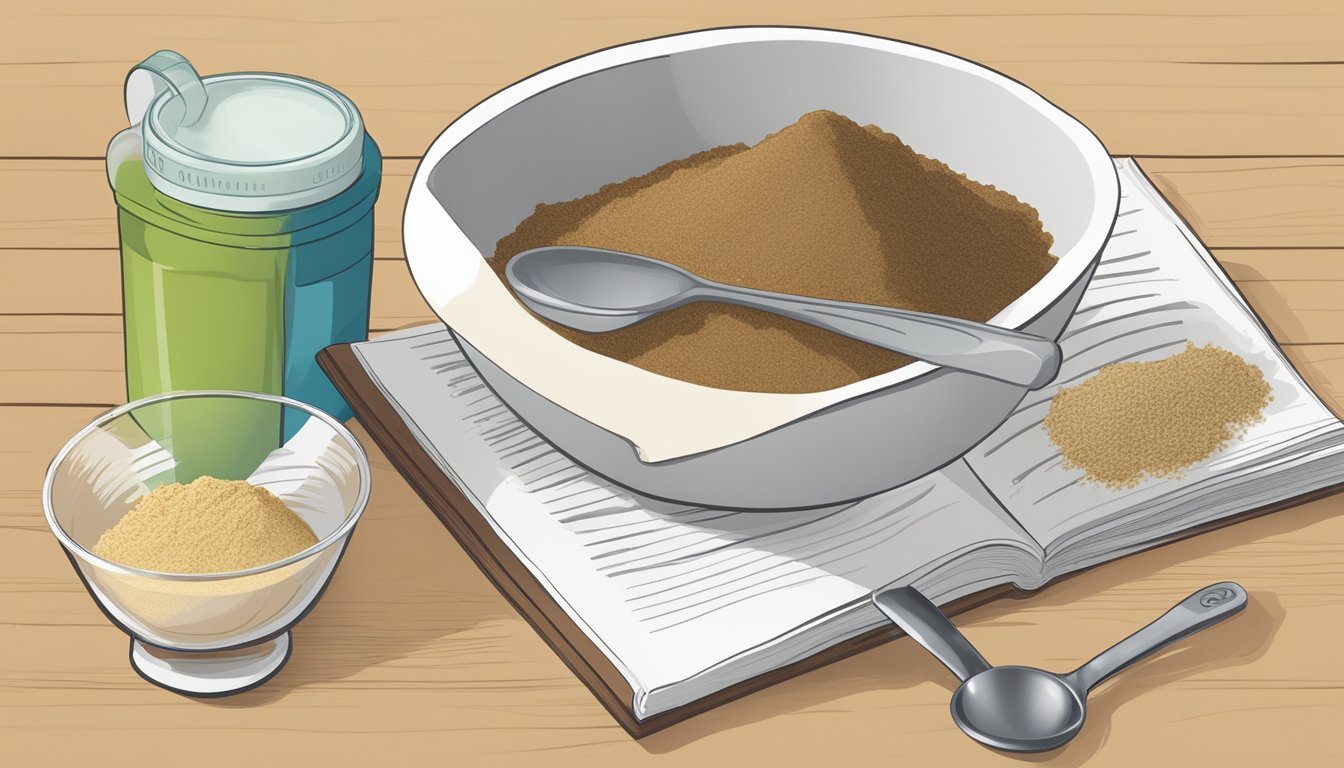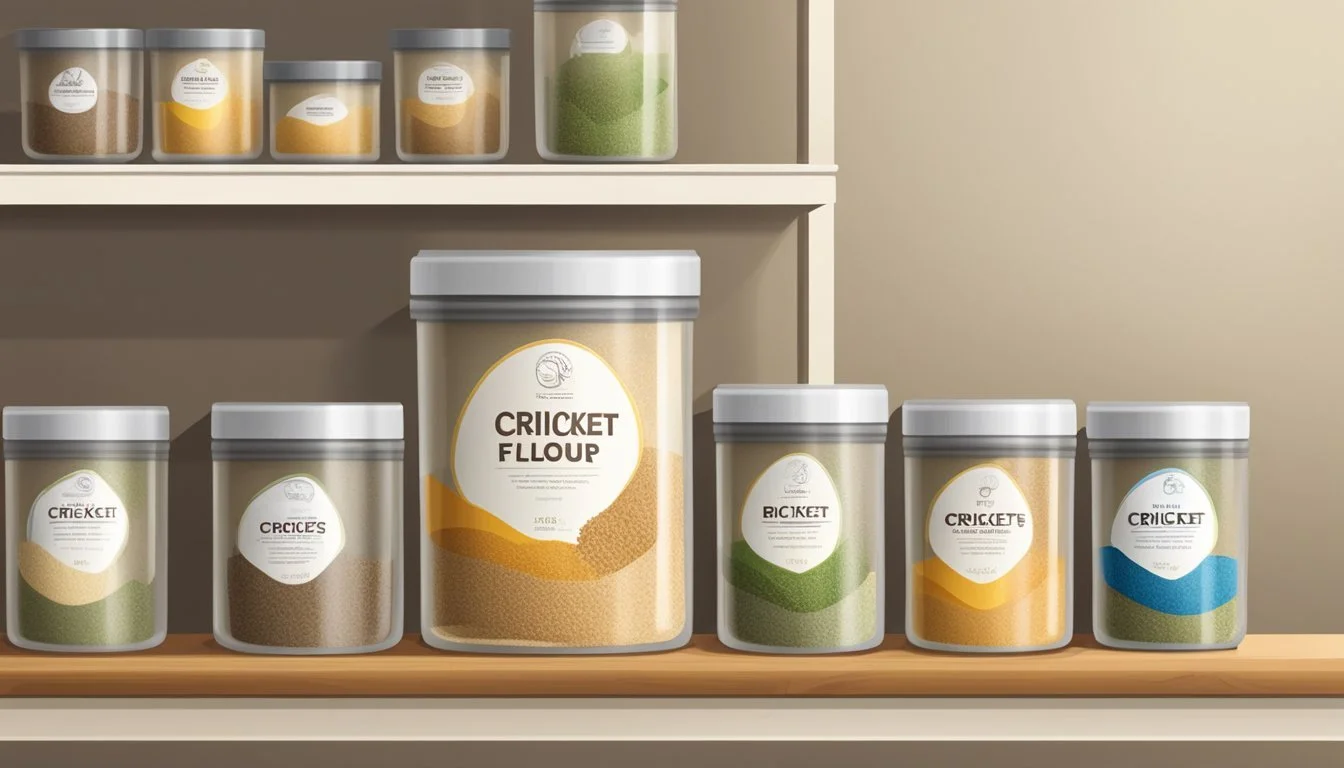How Long Does Cricket Flour Last?
Shelf Life and Storage Tips
Cricket flour is gaining popularity as a sustainable protein source that caters to the growing interest in alternative dietary choices. This protein-rich powder, made from ground crickets, offers a high protein content comparable to traditional meat sources such as skinless chicken breasts. With its impressive nutritional profile, including a significant amount of iron, cricket flour presents an environmentally friendly option for those looking to diversify their protein intake and participate in the consumption of edible insects, a practice common in many cultures around the world.
The shelf life of cricket flour, once opened, typically ranges between 6 to 12 months if stored correctly. To ensure the longevity and freshness of cricket flour, it should be kept in a cool, dry place away from sunlight. Proper storage is critical; an airtight container serves as the best option to retain the quality of the flour over time. Unopened, it can last even longer, provided it is stored under the right conditions and away from factors that could accelerate deterioration such as moisture and heat.
Cricket Flour Basics
In the emerging market of sustainable and alternative protein sources, cricket flour stands out due to its impressive shelf life and robust nutritional profile.
What Is Cricket Flour
Cricket flour, also known as cricket powder, is a fine-ground flour produced from whole crickets that have been dried and milled. This flour is a sustainable protein source that can be incorporated into various recipes. Combining the versatility of grain flours with the nutrient density of insect protein, cricket flour offers a unique alternative to traditional baking ingredients suitable for various dietary needs.
Nutritional Profile
Protein Content: Cricket flour is exceptionally high in protein, with 58 to 65% protein content by weight, making it comparable to skinless chicken breasts.
Essential Amino Acids: The flour contains all essential amino acids, qualifying it as a complete protein source vital for muscle development and repair.
Fiber: It is also higher in fiber than traditional all-purpose flour, aiding in digestive health.
Iron and Vitamin B12: Rich in iron and vitamin B12, cricket flour can contribute to a healthy blood system and nerve function.
Other Nutrients: Additionally, cricket powder provides calcium, potassium, vitamin B2, and essential fatty acids, packing a dense nutritional punch in a small quantity.
By incorporating cricket flour into one's diet, they are opting for a source of nutrition that is high in protein and essential micronutrients while supporting environmentally sustainable food solutions.
Freshness and Quality Indicators
To ensure cricket flour is at its peak quality, the consumer should look for specific signs in texture and coloration, as well as flavor and odor, that indicate freshness.
Texture and Coloration
Fresh cricket flour should have a fine, powdery texture. If the flour exhibits clumps, lumps, or a gritty texture, it's likely compromised and should not be used. In terms of coloration, cricket flour typically presents an earthy hue. Any discoloration, such as a dull or inconsistent color, can signify degradation.
Flavor and Odor
Cricket flour is known for its slight nutty and earthy taste when fresh. A deviation from this can indicate spoilage. The odor is a strong indicator of freshness; cricket flour should not have any smell or might have just a slightly nutty smell. If one detects a rancid or musty odor, this is a clear sign that the flour is no longer safe for consumption.
Proper Storage Techniques
To ensure an extended shelf life for cricket flour, one must employ the best storage practices. Choosing the appropriate containers and maintaining ideal storage conditions are paramount to prevent spoilage.
Best Containers
For cricket flour, airtight containers are crucial to prevent exposure to moisture and oxygen, both of which can accelerate spoilage. Containers made from plastic or glass with a secure seal are suitable choices. It is essential to use containers that are both moisture- and oxygen-proof.
Plastic containers: These should be food grade and have a tight-fitting lid.
Glass jars: A jar with a screw-on lid that seals can be effective.
One must ensure that the containers are thoroughly cleaned and dried before placing the flour inside to prevent any contamination.
Ideal Storage Conditions
Cricket flour's longevity is significantly affected by the storage environment. The ideal conditions are in a cool, dry place with a consistent temperature, ideally between 60-70°F (15-21°C).
Temperature: Consistent, cool temperatures prevent the activation of any insects or the acceleration of decomposition processes.
Humidity: Low humidity levels mitigate the risk of moisture buildup which can lead to mold growth.
Storing cricket flour in the pantry, fridge, or freezer can extend its shelf life. If storing in the fridge or freezer, ensure the flour is well-sealed to prevent it from absorbing any odors. The fridge is ideal for short-term storage while the freezer is best for long-term preservation of up to 1-2 years. Regularly checking the cricket flour for signs of spoilage is an important part of maintaining its quality over time.
Shelf Life and Expiration
Cricket flour, a protein-rich alternative to traditional grain flours, boasts a noteworthy shelf life due to its low moisture content. Understanding how long it lasts and interpreting expiration labels are crucial for maintaining its quality and safety.
Shelf Life Factors
Temperature and Storage: Cricket flour's longevity is highly dependent on storage conditions. It should be kept in a cool, dry place, away from direct sunlight and any sources of heat or moisture. These conditions help prevent spoilage and preserve its nutritional value.
Container: To maximize shelf life, cricket flour should be stored in an airtight container. Exposure to air can quicken deterioration, leading to spoilage.
Use-By Date: While cricket flour can last up to 1 to 2 years when stored properly, one should always observe the following dates:
Best-by date: This indicates when the product is expected to be at its peak quality.
Expiration date: If listed, it can provide a more stringent guideline for when the product should no longer be consumed.
Decoding Expiration Labels
Expiration labels can often cause confusion, but they are a manufacturer's best estimate for how long the product will maintain optimal quality.
Best-by Date: This label is not an absolute indication of safety but rather a suggestion for when to use the flour for the best flavor and texture.
After the best-by or expiration date has passed, it is advisable to check the cricket flour for signs of spoilage such as a bad smell or visible mold before using, to ensure it remains safe for consumption.
Risks of Spoiled Cricket Flour
When it comes to cricket flour, recognizing the signs of spoilage is vital to ensure food safety. Spoiled cricket flour can pose health risks due to the potential for mold growth and the presence of harmful bacteria, like E. coli.
Signs of Spoilage
Cricket flour, like other edible products, is prone to spoilage that can be identified through:
Odor: A sour or unusual smell that deviates from the flour's naturally mild, nutty scent.
Appearance: Any visible mold or discoloration suggests spoilage.
Texture: Clumping or a change in the texture from fine powder can indicate high moisture levels, conducive to spoilage.
Food Safety Concerns
Consuming spoiled cricket flour can lead to food safety concerns:
Mold Growth: The presence of mold not only compromises the quality but can lead to allergic reactions or respiratory problems.
Bacterial Dangers: Pathogenic bacteria such as E. coli can cause severe foodborne illnesses. Proper storage and handling are critical to prevent bacterial contamination.
Health Risks: Ingesting spoiled cricket flour might result in food poisoning symptoms, including nausea, vomiting, and diarrhea.
Consumers should ensure they store cricket flour correctly and check for signs of spoilage to mitigate these risks.
Maximizing Usability
Proper storage techniques are critical in extending the shelf life of cricket flour and ensuring its quality for culinary use. Below are specific strategies centered around minimizing exposure to air and moisture, and utilizing freezing as a method of preservation.
Tips for Extending Freshness
Cricket flour’s freshness can be significantly extended with appropriate storage methods. To maintain quality and prolong usability, one should:
Store cricket flour in a cool, dry place, away from direct sunlight, which helps prevent the degradation of its nutritional quality.
Seal in an airtight container to limit its exposure to air and moisture, elements that can lead to spoilage.
Moisture absorption can be combated by including silica gel packets in the storage container, which will help to keep the cricket flour dry.
Utilizing Frozen Cricket Flour
For long-term storage, freezing cricket flour can be an effective method:
Freezing dramatically slows down any degradation processes, extending cricket flour’s usability far beyond typical shelf life.
When stored in the freezer, label each container with the processing date to track how long the flour has been stored.
Thaw only the necessary amount to ensure the rest remains frozen and undisturbed, preserving its freshness. It’s important to note that cricket flour should be kept at a consistent temperature; frequent thawing and refreezing may compromise its quality.
Safe to eat cricket flour is one that is stored under conditions that prevent spoilage. Regularly check frozen cricket flour for any signs of freezer burn or off-odors, which indicate it is no longer suitable for consumption.
Cricket Flour in Cooking
Cricket flour is a sustainable high-protein alternative to traditional flours and can be incorporated into various recipes. It is essential to understand the suitable recipes for cricket flour usage and specific guidelines for substitution to maintain the desired texture and flavor of dishes.
Suitable Recipes
Cricket flour can provide a nutty taste and a protein boost to many recipes. It is not typically used as a standalone flour but paired with other flours to improve nutritional value. Recipes that can benefit from cricket flour include:
Bread: A portion of cricket flour can be added to whole grain or all-purpose flour blends to increase protein content.
Cookies and Protein Bars: For a subtle taste and protein enrichment, it is added to recipes using wheat or nut flours.
Pasta: Incorporate cricket flour with semolina or white flour for a more nutrient-dense pasta.
Smoothies: A spoonful of cricket flour can be blended into smoothies for an extra protein kick.
Cricket flour works well in gluten-free recipes as a partial substitute for gluten-free blends or almond flour, adding both protein and a unique flavor profile.
Substitution Guidelines
Cricket flour is dense in protein but doesn't have the same binding properties as wheat flours. When substituting traditional flours with cricket flour, consider the following:
All-Purpose Flour: For every 1 cup of all-purpose flour, use up to 1/4 cup of cricket flour and 3/4 cup of all-purpose, whole wheat, or another base flour.
Gluten-Free Substitutions: Substitute up to 20% of the gluten-free flour blend with cricket flour to enhance protein without compromising texture.
Self-Rising Flour: Since cricket flour lacks leavening agents, it should be mixed with self-rising flours or additional leavening must be added to recipes.
Here is a simple substitution table for cricket flour in typical baking scenarios:
Base Flour Type Substitute With Cricket Flour All-Purpose/Whole Wheat Replace up to 1/4 cup per cup Gluten-Free Blend Replace up to 20% of total Nut Flour (like almond) Replace up to 1/4 cup per cup Self-Rising Flour Add leavening if replacing
By adhering to these guidelines, one ensures the successful integration of cricket flour into everyday cooking, enhancing both the nutritional value and contributing to a more sustainable culinary practice.
Additional Considerations
When opting for cricket flour, it’s important for consumers to be aware of allergies and the environmental implications of their flour choice. Not all considerations are immediately apparent, but they are critical for informed decision-making.
Allergen Information
Cricket flour is made from ground crickets, which are arthropods, like shellfish. Consumers with a shellfish allergy may experience similar reactions to cricket flour, as both shellfish and crickets contain the same type of allergenic proteins. It's imperative for these consumers to consult with an allergy specialist before introducing cricket flour into their diet.
Environmental Impact
Cricket flour presents as a sustainable alternative to conventional baking flours. Insect farming tends to require significantly less land, water, and feed than traditional livestock farming, which contributes to a reduced environmental footprint. Furthermore, cricket flour is high in protein and requires comparably less processing, enhancing its sustainability appeal for environmentally conscious consumers.

